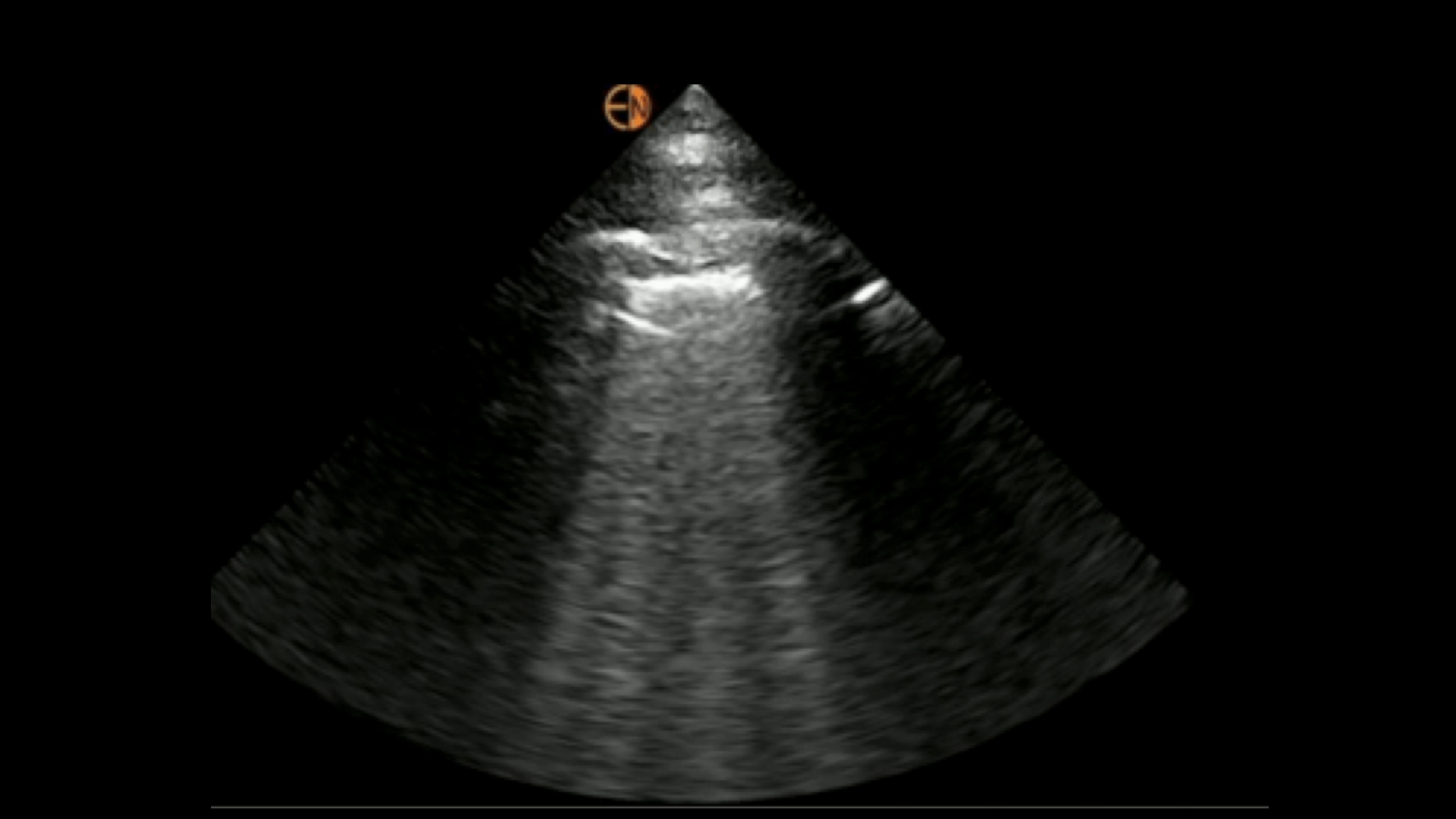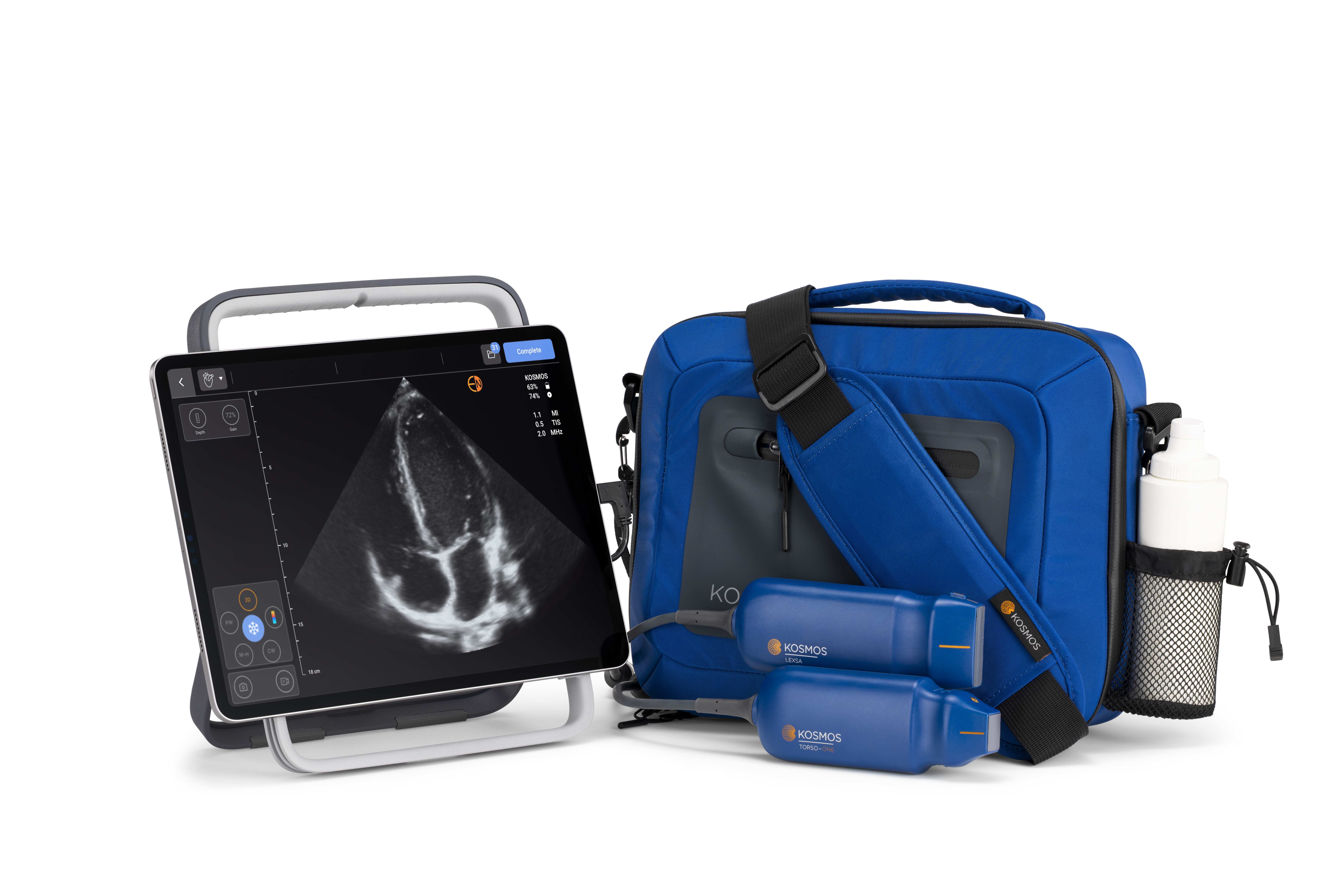You May Not Need a Chest X-ray to Confirm Central Lines Anymore
For years, placing a central line (or central venous catheter, CVC) required sending the patient for a follow-up chest X-ray to confirm its position.
While effective, this process has drawbacks: transporting critically ill patients out of the ICU, additional costs, and delays in delivering much-needed treatment(1,2).
What if there was a faster, safer, and less costly alternative?
Thanks to advances in ultrasound-guided technology, there might be a way to skip the X-ray and still confirm that the central line is perfectly positioned(2).
A recent study explored the feasibility of ultrasound to confirm the position of a CVC tip. The findings suggest that ultrasound is an effective and real-time way to confirm placement, potentially making chest X-rays unnecessary(3).
Not only does this streamline patient care, but it also reduces healthcare costs and enhances safety for critically ill patients(2). Let’s dive into how ultrasound-guided central line placement can transform patient care and why it’s worth considering for your practice.
Key Takeaways
- A recent study shows that ultrasound can replace X-rays for central line confirmation in real-time.
- Cost savings come from reduced reliance on radiology imaging.
- Patient safety improves as ICU patients remain in their rooms.
- Faster care allows immediate adjustments and quicker treatments.
- A critical skill for providers, ultrasound enhances modern patient care.
Table of contents
Why Ultrasound for Central Line Placement?
Central line placement is critical in many healthcare settings, especially in the ICU or nephrology departments where patients may need a dialysis line placement. Traditional practice dictates that a chest X-ray is performed once the line is placed to confirm its location. This process, while effective, can slow down care and require additional resources(2).
Ultrasound-guided procedures offer real-time visualization of the CVC tip as it’s being positioned(4). This means healthcare providers can confirm its accuracy without leaving the bedside.
If adjustments are needed, they can be made promptly, eliminating delays and enhancing patient outcomes. This approach is gaining attention not just for its efficiency but also for its potential to improve patient safety(5).
Lowering Costs by Reducing Imaging Needs
One of the main advantages of using ultrasound for central line placement is the cost savings(1). Every chest X-ray that can be skipped reduces healthcare expenses for the facility and the patient. Chest X-rays, through standard, can increase costs, especially in high-demand hospital settings where central line placements are routine.
By using ultrasound instead, hospitals can minimize the burden on radiology services. Fewer imaging requests mean radiologists can focus on other essential diagnostics, improving the system’s efficiency. Ultrasound can transform central line procedures, and learning this skill enhances patient safety and efficiency in care.
Improving Patient Safety and Comfort in the ICU
Any additional movement or disruption can be a risk for ICU or critical care patients. Transporting a patient out of the ICU for a chest X-ray after central line placement may seem simple, but it increases the chances of complications.
Critically ill patients are often unstable, and even a short trip to the radiology department can lead to hemodynamic issues, accidental dislodgement of the line, or increased infection risks(6).
With ultrasound, these risks are minimized. Patients stay safely in their ICU beds, and their central line placement is confirmed on the spot. This keeps them comfortable, reduces stress, and minimizes the chance of adverse events.
Expedited Care with Real-Time Ultrasound Confirmation
Time is of the essence in critical care. With traditional central line placement, delays are often inevitable as the patient waits for the X-ray and radiologists to confirm line placement. This wait can delay the initiation of lifesaving treatments.
With ultrasound-guided CVC placement, there’s no need to wait(2). Providers can assess and confirm the line’s position instantly, allowing treatments to begin without delay.
For dialysis line placements, this expedited process is especially valuable. Patients in renal failure may urgently need dialysis, and being able to confirm line placement without waiting for an X-ray allows for immediate intervention.
Accurate Placement and Immediate Correction
With ultrasound, providers gain real-time feedback on the central line’s position. If it’s not quite where it needs to be, adjustments can be made instantly, minimizing the risk of misplacement and associated complications.
A malpositioned line can lead to serious issues, such as arrhythmias, vessel injury, or clotting. By using ultrasound, providers can be confident in the accuracy of the placement(4,5).
This instant feedback is a game-changer. Rather than inserting the line and hoping it’s correctly positioned, ultrasound provides certainty, ensuring it is where it needs to be from the start.
Looking for the right ultrasound equipment? Contact us and make ultrasound-guided line placement a key part of your clinical practice.
The Bigger Picture: Benefits for Healthcare Systems
Switching to ultrasound-guided CVC placement doesn’t just benefit individual patients; it benefits the entire healthcare system. Hospitals adopting this approach can expect improved efficiency across the board.
Fewer X-rays free up radiology resources, allowing radiologists to focus on more complex imaging needs. Faster confirmation of line placements leads to better patient throughput, which means more patients can receive timely care.
For providers, learning this technique adds an invaluable skill to their repertoire. The ability to place and confirm a central line with ultrasound is increasingly becoming a standard of care, particularly in critical care nephrology settings.
Critical care ultrasound training and devices are essential in meeting today’s ICU demands and should be accessible to healthcare providers.
Building Critical Care Skills with Ultrasound
Incorporating ultrasound-guided central line placement into practice offers significant benefits for healthcare providers. Ultrasound isn’t just a helpful tool; it’s an essential skill for modern patient management. More and more procedures are shifting towards bedside, ultrasound-guided approaches, making it crucial for providers to be comfortable and proficient with this technology.
For those working in critical care, nephrology, or any setting where central or dialysis line placement is common, having ultrasound expertise is an asset. It doesn’t just streamline patient care; it strengthens a provider’s skill set and positions them at the forefront of modern medicine.
Conclusion
Ultrasound-guided central line placement represents a significant advancement in patient care. Reducing the need for chest X-rays minimizes costs, enhances patient safety, and expedites treatment for critically ill patients. This technique isn’t just a convenience for healthcare providers- it’s becoming an essential skill.
As ultrasound technology grows in use and effectiveness, it is time for healthcare providers to enhance it. Training in ultrasound-guided central line placement improves patient outcomes and aligns with the future of patient-centered, efficient care.
So why wait? Equip yourself with this skill, and be part of the future of critical care.
References
1. Ablordeppey, E. A., et al. (2022). Economic Evaluation of Ultrasound-guided Central Venous Catheter Confirmation vs Chest Radiography in Critically Ill Patients: A Labor Cost Model. Western Journal of Emergency Medicine, 23(5), 760.
2. Man, L. de, et al. (2023). Comparison between ultrasound and chest X-ray to confirm central venous catheter tip position. SA Journal of Radiology, 27(1), 2587.
3. Woodland, D. C., et al. (2018). Routine chest X-ray is unnecessary after ultrasound-guided central venous line placement in the operating room. Journal of Critical Care, 46, 13–16.
4. Ablordeppey, E. A., et al (2017). Diagnostic accuracy of central venous catheter confirmation by bedside ultrasound versus chest radiography in critically ill patients: A systematic review and meta-analysis. Critical Care Medicine, 45(4), 715.
5. Volpicelli, G., et al. (2024). Feasibility of a new ultrasound-guided procedure to ensure the correct position of the central venous catheter tip. The American Journal of Emergency Medicine, 84, 39–44.
6. Parveez, M. Q., et al. (2020). Critical events during intra-hospital transport of critically ill patients to and from the intensive care unit. Turkish Journal of Emergency Medicine, 20(3), 135.



